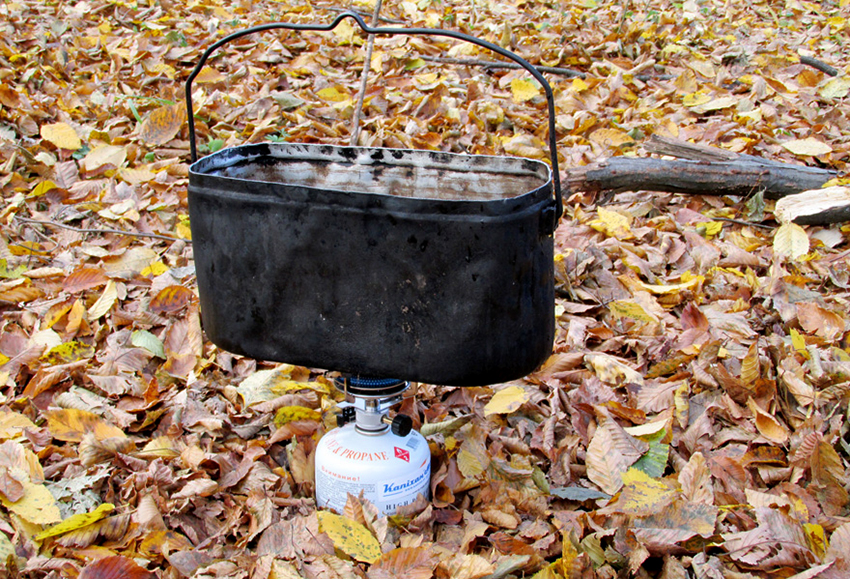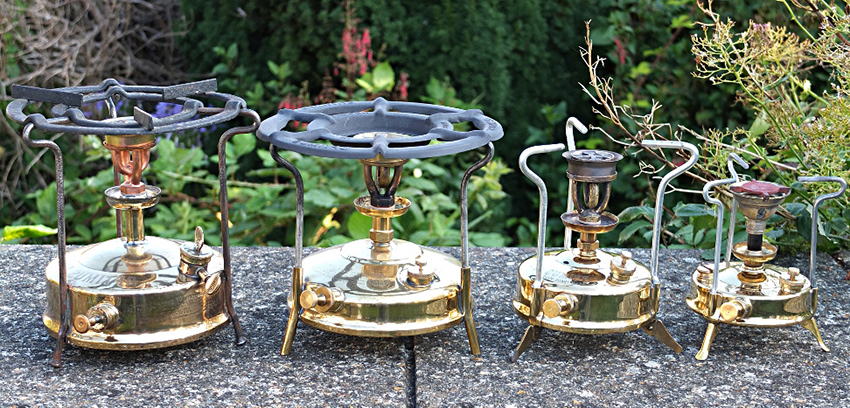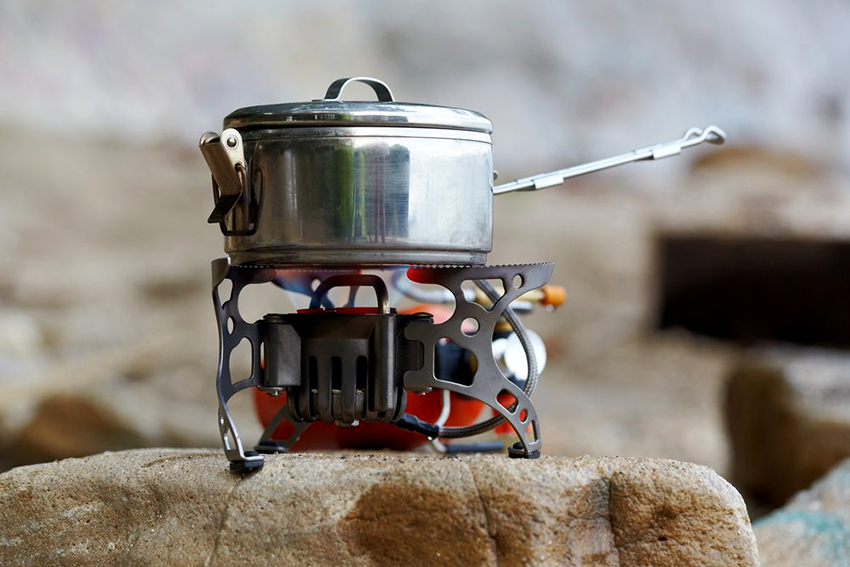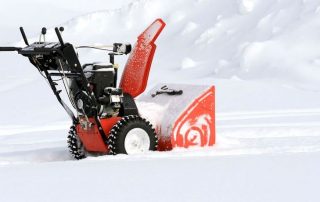A tourist gas burner or a portable stove is an essential piece of equipment for summer residents, tourists and fishermen. The modern assortment of stores offers an extensive range of models, differing in the type of design, technical and operational characteristics, as well as functionality. The information presented in the article will help you choose the most suitable gas burner taking into account the most important parameters.
Content [Hide]
Tourist gas burner: sources of open fire, their features
All portable gas-fired sources of open fire can be roughly divided into two categories:
- tiles;
- burners.
Each type of these structures has its own characteristics, but they are all in demand due to their practicality and advantageous advantages.
Benefits of Portable Gas Stoves and Burners
Burner gas cylinders and stoves are very economical. With low fuel consumption, they have a fairly high efficiency factor. The gas does not need to be preheated, which has allowed manufacturers to simplify camp stove and burner designs. Thanks to this, the weight of these devices has been reduced, and the system for their operation has become as accessible as possible.
Interesting fact! The energy value of the mixture in a gas cartridge of a tourist burner is 11900 kcal / kg. This figure significantly exceeds the capabilities of kerosene and gasoline.
In order to use the burner, it is enough to perform a few simple steps:
- attach the balloon to the structure;
- open the fuel supply valve;
- set it on fire.
Manufacturers also pay particular attention to the cleanliness of the fuel used to fill gas cylinders for tourist burners. Due to the absence of foreign matter, these devices do not clog, making them easy to maintain. Unlike other types of fuel, gas does not smoke or emit unpleasant odors during combustion.The end products of combustion are only water vapor and carbon oxides: carbon dioxide and carbon monoxide.
Disadvantages of portable gas stoves and burners
There are not only advantages to portable sources of open fire, but also some disadvantages. The key disadvantage is the instability of these devices at low temperatures. Many manufacturers have already found a solution to this problem, improving not only the composition of gas mixtures, but also the configuration of the nozzles on the gas cartridges, as well as the design of the burners themselves. Thanks to this, most models can provide uninterrupted operation even in such cases when the outside temperature reaches -22 ° C.
Most outdoor enthusiasts are comfortable with this functional range. If the temperature drops below -22 ° C, you cannot do without the use of liquid fuel. This is especially true of those cases when the expedition can be delayed.
Another disadvantage of hiking gas burners is the difficulty of having a fuel tank. The cylinders significantly increase the overall weight of the structure, while their capacity is not so high. The gas in these containers is under high pressure. Therefore, manufacturers are forced to use durable and heavy metal for the production of cylinders. On long expeditions, excess weight will create serious difficulties.
In addition, users have to solve the problem of proper disposal of gas cylinders. From the point of view of ethics and ecology in the field, it is not always possible to do this competently.
As the balloon is emptied, the pressure inside it drops. If there is little fuel in the container, the burner operation becomes unstable.
Helpful advice! To improve the performance of the device at a low fuel level, simply turn the cylinder over. However, only those designs that are equipped with a preheating tube and a fuel hose have this option.
The cost of gas is quite high. You will have to spend a lot to serve a large group of people on a long hike. In this respect, kerosene and gasoline are cheaper. Gas cylinders cannot be transported on airplanes due to the high internal pressure. This is fraught with certain difficulties, since there is no guarantee that after the flight it will be possible to buy cylinders of the appropriate standard on time.
General characteristics and types of gas camping stoves
All tourist gas stoves have the same structure. These devices consist of the following elements:
- body part;
- a pipeline equipped with a fuel consumption control system;
- burners (one or more);
- piezoelectric element that provides automatic ignition of fuel.
Most models of touring gas stoves are made of stainless steel. Manufacturers often use metal coated with anti-corrosion spraying. Low-cost modifications are equipped with aluminum burners, and in higher quality and more expensive versions, ceramic elements are installed. Stoves with one or two burners made of ceramic have several advantages over budget models:
- higher efficiency, since ceramics heats up quickly and retains heat for a certain time;
- high level of security;
- reduced fuel consumption;
- more stable operation at low temperatures.
Depending on the modification, the compact hiking gas stove can be of two types.In some models, the fuel tank is installed horizontally. A special compartment is provided for connecting a disposable container with gas in such devices. A collet connector is used as a connecting element. Plates with a horizontal installation of a fuel tank are lightweight and fairly simple in design. On the other hand, buying replacement cylinders for them is not cheap.
Other versions of devices have a universal type of power supply. An internal fuel container is installed in the body of such devices. In addition, they have a connector for connecting an external cylinder. Gas cookers with universal power supply are practical and convenient, although their dimensions are much larger than those of models with a horizontal type of gas tank installation.
Note! The built-in gearbox in models with universal power supply corresponds to the RDSG1-1.2 class.
The main criteria for choosing gas camping stoves
Before you go to the store to buy a tourist stove, you must carefully weigh your choice, considering the main parameters of these devices.
Such an indicator as power deserves paramount attention. On average, cooking 1 liter of food requires about 1 kW of thermal energy. On a hike, one person needs about 0.5-0.7 liters of product at a time. Based on these data, it is easy to calculate the required power level of the unit. For example, three tourists for the expedition will need a stove with a capacity of 1.5-2 kW. The weight of the standard units ranges from 0.8 to 2 kg. This indicator depends on several factors:
- the material from which the tile is made;
- burner area;
- the size of the body;
- design features, for example, the nature of the location of the fuel tank, which can be built-in or removable.
Since you have to carry all your things during the hike, the weight of the travel tiles is of great importance. When choosing the right model for expeditions, it is imperative to take into account fuel consumption. This indicator is usually prescribed in the technical passport that is attached to the stove. It is expressed either by the time it takes to boil 1 liter of water, or by the amount of gas consumed in 1 hour. There is one regularity here: the more time it takes to boil the liquid, the less fuel consumption.
The dimensions of the hob impose restrictions on the width of the cookware used, and therefore on the amount of food that can be cooked in one go. If a container with a capacity of 5 liters is placed on the tile, then such a unit is capable of feeding about 5-7 people in one cooking.
Devices equipped with die-cast aluminum burners produce open flames and therefore need wind protection. In some models, such protection is included in the standard package, in other cases you will have to purchase it separately.
Note! Camping hobs equipped with ceramic gas burners do not need wind protection as the flame is hidden inside the burner.
Classification of gas burners, cartridges for them
Compact gas burners for outdoor activities and tourism can be classified according to different criteria, for example, by type of design, functionality, weight category, etc.
Taking into account the design features, the following types of gas burners are distinguished:
- bulky items;
- devices with a hose;
- integrated cooking appliances.
Gas burners on a can with piezo ignition and without it
Bulk structures are installed directly on the fuel container. Unlike conventional burners, piezo-ignited devices do not need matches or lighters to light the fire. They are more practical and convenient, although they are not without drawbacks.
Related article:
Gas burner for roofing work: varieties, characteristics and features
Councils for working with the device. Instructions for self-fabrication of the structure.
Disadvantages of burners with piezo ignition:
- when wet, the device fails;
- at an altitude exceeding 3 km, piezo ignition does not function;
- high price;
- heavy construction weight;
- low level of reliability.
In any case, in such devices it is still possible to ignite the gas with matches. Themselves on-scale burners are quite compact, they are considered the lightest. The standard weight of the structures is 70-90 g, although there are also lightweight models weighing 23 g on sale. Such devices can be easily hidden in a pocket or a small mug. They are easy to use. It is enough to screw the burner onto the cylinder and ignite the gas. The design consists of a minimum number of parts, which increases the level of reliability. One of the advantages of single-barrel burners is their low price.
The compact size of the overhead burners also creates some inconvenience, limiting the possibility of cooking a large amount of food. The permissible volume of dishes, depending on the model, varies between 1-3 liters. Therefore, over-sized structures cannot be used as gas burners for a cauldron: they cannot be used to feed a large group of tourists.
Most models are not suitable for complex dishes. In the field, they cannot be used to cook stew or porridge. These burners are mainly designed for boiling water. In the case of using bulky dishes, the stability of the structure is seriously affected.
Helpful advice! Using a flexible hose will heat the cylinder as well as install a continuous windscreen, improving the performance of the single-cylinder burner in bad weather.
The multi-races and rogaining athletes, as well as people who prefer easy-going tourism or solo hikes, will benefit from the multi-races. In addition, a light burner can function as an emergency or auxiliary source of open fire.
Features of Camping Gas Burners with Hose
In this case, a flexible hose is used to connect the tourist gas burner to the cylinder. Such designs not only efficiently consume fuel in bad weather conditions, but also allow the use of heavy, roomy dishes. There are additional benefits to having a flexible hose. The gas cylinder can be manually heated by placing it in a bowl of warm water or by placing it in a sleeping bag if cooking is done in the tent vestibule.
If the outside temperature is low, fuel enters the burner slowly. The same applies when the gas is practically depleted. The flexible hose allows you to flip the cylinder, improving fuel flow. As a result, the burner operation becomes more stable.
For long journeys, it will be useful to have a fuel preheating system in the burner for hiking. The Kovea Camp1 + gas burner is a prime example of a successful combination of efficiency and functionality. There is a rigid tube inside the fuel line. It is brought directly to the nozzle, where the fuel is supplied already in a heated and gaseous state. Therefore, the burner works efficiently even at low temperatures.
If the device does not have a preheating system, the gas can remain liquefied. This will cause the appliance to run unevenly and consume too much fuel.
Advantages of hose burners:
- it is allowed to use a continuous windscreen that increases the efficiency of the device in windy weather;
- stable construction;
- it is possible to use capacious dishes (from 2 to 8 liters);
- a large nozzle that ensures uniform heating of food;
- the ability to accurately adjust the strength of the flame.
Note! Flexible hose burners can be used for complex dishes that require thorough mixing of ingredients. These devices are perfect for operations such as frying or stewing food.
Disadvantages of hose burners:
- heavy weight and large dimensions;
- damage to the hose can cause gas leakage and equipment failure;
- relatively high cost.
Burners with flexible hose versatile and can be used all year round. They are able to simultaneously feed a group of tourists, consisting of 6-8 people.
Integrated Cooking Systems: Energy Efficient Camping Burners
An integrated cooking system is a unit that integrates a burner and a pot. Such devices are economical in fuel consumption, which reduces the number of cylinders required for the expedition and lightens the weight of the backpack. Integrated systems are small in size and do not pose any problems during transportation. All elements of the appliance can be compactly folded into the pot. The special structure of the structures allows you to refuse wind protection, since the burner is reliably sheltered from bad weather.
Disadvantages of integrated systems:
- relatively large weight of the structure;
- relative high cost;
- to use ordinary dishes, you will have to additionally purchase an adapter - otherwise, the burner efficiency will significantly decrease;
- most models are designed exclusively for boiling water, so complex dishes will not work.
Gas Burner Cylinder Standards and Selection Criteria
When choosing a gas burner, it is imperative to pay attention to the connecting thread for the cylinder, otherwise it will not be possible to connect a container with fuel to the equipment. There are three standards for container fastening:
- threaded connection Lindal;
- bayonet mount without thread Easy Click;
- collet connection without thread.
Most of the models on the market have a threaded connection standard. The products of domestic manufacturers are mainly characterized by a collet type of cylinder fastening. These devices include the Pathfinder tourist gas burners, which are in the middle price segment. They are in high demand among consumers. As for cylinders with a bayonet mount type, these containers are widespread in the domestic market, however, devices with such a connection are produced only by Campingaz.
Note! Many manufacturers offer universal models. In them, the mount allows you to connect bayonet and threaded cylinders. This burner option is considered the most acceptable and convenient.
When choosing a gas burner, other criteria are taken into account:
- the number of people in the tourist group;
- a hiking diet (for cooking vegetable stews, cereals and noodles, a burner with a wide nozzle is required, but if it is supposed to extinguish food, it is better to take a device with a sensitive flame control);
- weather;
- weight of the structure (burners made of aluminum and titanium alloys weigh less);
- flame power (when raised to a height, the air dilutes, therefore, the burner efficiency decreases);
- dimensions;
- compatibility with different types of cylinders.
Of course, there is no burner that will meet all the needs of most buyers. Nevertheless, having studied in detail the features and characteristics of the products on the market, you can choose the most suitable option for yourself. The main thing is to clearly define the tasks that the burner will have to solve during the campaign, and to know the operating conditions.





















